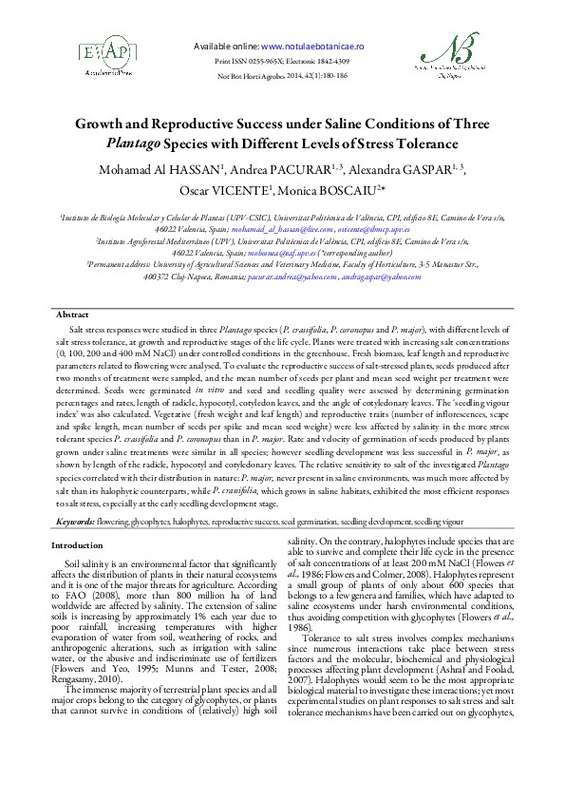JavaScript is disabled for your browser. Some features of this site may not work without it.
Buscar en RiuNet
Listar
Mi cuenta
Estadísticas
Ayuda RiuNet
Admin. UPV
Growth and Reproductive Success under Saline Conditions of Three Plantago Species with Different Levels of Stress Tolerance
Mostrar el registro completo del ítem
Al Hassan, M.; Pacurar, A.; Gaspar, A.; Vicente Meana, Ó.; Boscaiu Neagu, MT. (2014). Growth and Reproductive Success under Saline Conditions of Three Plantago Species with Different Levels of Stress Tolerance. NOTULAE BOTANICAE HORTI AGROBOTANICI. 42(1):180-186. https://doi.org/10.15835/nbha4219349
Por favor, use este identificador para citar o enlazar este ítem: http://hdl.handle.net/10251/78808
Ficheros en el ítem
Metadatos del ítem
| Título: | Growth and Reproductive Success under Saline Conditions of Three Plantago Species with Different Levels of Stress Tolerance | |
| Autor: | Al Hassan, Mohamad Pacurar, Andrea Gaspar, Alexandra | |
| Entidad UPV: |
|
|
| Fecha difusión: |
|
|
| Resumen: |
[EN] Salt stress responses were studied in three Plantago species (P. crassifolia, P. coronopus and P. major), with different levels of salt stress tolerance, at growth and reproductive stages of the life cycle. Plants ...[+]
|
|
| Palabras clave: |
|
|
| Derechos de uso: | Reconocimiento (by) | |
| Fuente: |
|
|
| DOI: |
|
|
| Editorial: |
|
|
| Versión del editor: | http://dx.doi.org/10.15835/nbha4219349 | |
| Código del Proyecto: |
|
|
| Agradecimientos: |
Work in the UPV laboratories was funded by a grant to O.V. from the Spanish Ministry of Science and Innovation (Project CGL2008-00438/BOS), with contribution from the European Regional Development Fund. M.A.H. is a recipient ...[+]
|
|
| Tipo: |
|









